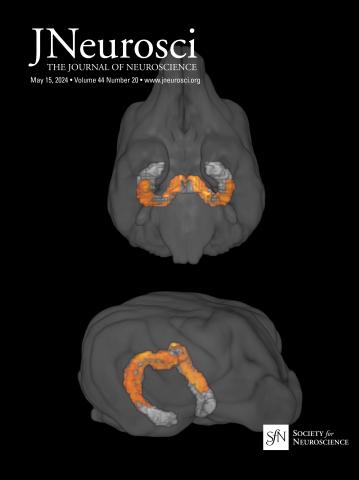不确定性,而不是心理内容,在推断他人时驱动背内侧前额叶参与。
IF 4.4
2区 医学
Q1 NEUROSCIENCES
引用次数: 0
摘要
为了驾驭社会生活,人类会对他人的意图、信仰、情感和个性进行推断,也就是说,他们会进行心理化。在心智化过程中,大脑区域的网络始终比在精心控制的比较任务中更活跃,有时被认为是特定领域心智化过程的证据。在这里,我们调查了在心智化过程中这些区域的参与可能是由于不确定性。我们使用功能磁共振成像扫描了46名参与者(33名女性,13名男性),因为他们在不同程度的不确定性下进行了心理和非心理推断(关于人类思想、人体和物理对象)。不确定性解释了心智化网络的一个关键区域的激活:背内侧前额叶皮层(DMPFC)。在各种情况下,不确定性越高,DMPFC参与程度越高。在控制不确定性的情况下,DMPFC参与程度并不能区分心理和非心理推断。结果表明,在社会推理过程中,DMPFC的明显选择性参与可能被更好地理解为对不确定性的反应,不确定性在社会环境中经常升高,这对社会脑的认知结构和社会功能障碍有影响。人类的社会行为往往依赖于对他人心理的推断(心理化),非典型心理化(包括自闭症)的案例突出了这一点。长期以来的争论围绕着心智化是来自专门的认知过程还是更普遍的机制。在过去的研究中,大脑的“心智化网络”在心智化过程中始终比其他活动更活跃,这可能支持领域特异性。与此相反,我们的研究表明,在心智化网络中,一个关键的大脑区域,即背内侧前额叶皮层的参与,可以解释为对不确定性的反应,而不是对心理内容的反应。这表明了对社会认知神经基础的科学理解的修正,并可能对社会行为的非典型性起源产生影响。本文章由计算机程序翻译,如有差异,请以英文原文为准。
Uncertainty, not mental content, drives dorsomedial prefrontal engagement during inferences about others.
To navigate social life, humans make inferences about the intentions, beliefs, emotions, and personalities of other people, i.e., they mentalize. A network of brain regions consistently engages more during mentalizing than during carefully controlled comparison tasks, sometimes cited as evidence of domain-specific mentalizing processes. Here we investigated the possibility that engagement of these regions during mentalizing may be due to uncertainty. We scanned 46 participants (33 female, 13 male) using fMRI as they made mental and non-mental inferences (about human minds, human bodies, and physical objects) under varying levels of uncertainty. Uncertainty explained activation in a key region of the mentalizing network: the dorsal medial prefrontal cortex (DMPFC). Higher uncertainty was associated with greater DMPFC engagement across conditions, and, when controlling for uncertainty, DMPFC engagement did not differentiate mental from non-mental inferences. Results suggest that the apparently selective DMPFC engagement during social inference may be better understood as a response to uncertainty, which is often elevated in social contexts, with implications for the cognitive architecture of the social brain and disorders of social function.Significance statement Human social behavior often hinges on inferences about minds of other people (mentalizing), as highlighted by cases of atypical mentalizing, including autism. Longstanding debate surrounds whether mentalizing arises from specialized cognitive processes or more general mechanisms. In past research, the brain's "mentalizing network" is consistently more engaged during mentalizing than other activities, possibly supporting domain-specificity. In contrast, here we show that the engagement of a key brain region in the mentalizing network, the dorsal medial prefrontal cortex, can be explained as a response to uncertainty rather than mental content. This suggests a revision of scientific understanding of social cognition's neural basis, with possible implications for the origins of atypicalities in social behavior. .
求助全文
通过发布文献求助,成功后即可免费获取论文全文。
去求助
来源期刊

Journal of Neuroscience
医学-神经科学
CiteScore
9.30
自引率
3.80%
发文量
1164
审稿时长
12 months
期刊介绍:
JNeurosci (ISSN 0270-6474) is an official journal of the Society for Neuroscience. It is published weekly by the Society, fifty weeks a year, one volume a year. JNeurosci publishes papers on a broad range of topics of general interest to those working on the nervous system. Authors now have an Open Choice option for their published articles
 求助内容:
求助内容: 应助结果提醒方式:
应助结果提醒方式:


